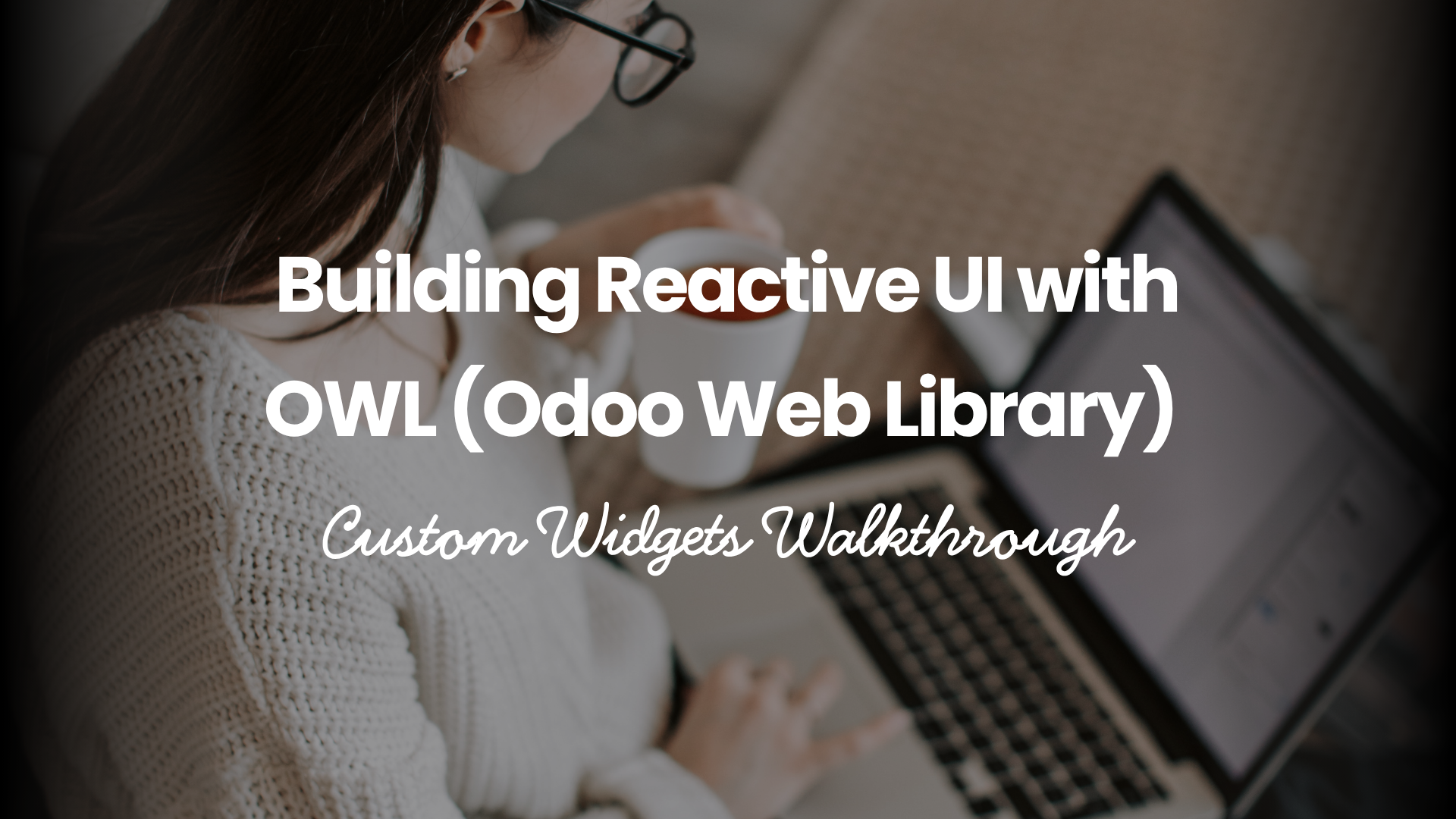Introduction
Ever felt the default Odoo UI just wasn’t reactive enough for your modern apps? That’s where OWL (Odoo Web Library) comes in. Designed to revolutionize the way developers build frontends in Odoo, OWL offers a fully reactive, component-based JavaScript framework.
As a DevOps engineer or frontend developer, learning OWL is a game-changer. Let’s dive into how to build custom widgets using OWL—because once you go reactive, you never go back.
🔍 Understanding OWL (Odoo Web Library)
OWL and the Future of Frontend in Odoo
OWL is not just a library—it’s the future of frontend in Odoo. From v14 onward, OWL powers most of the modern UI components.
Benefits of Using OWL
- Reactivity & State Management
- Component-based architecture
- Lifecycle methods similar to React/Vue
- Seamless integration into existing Odoo modules
To override a widget in the Odoo 18 POS, extend the required widget using odoo.define() and modify its methods or properties as needed.
OWL vs Traditional QWeb
Feature | OWL | QWeb |
Reactivity | ✅ Yes | ❌ No |
Component Reusability | ✅ High | 🚫 Limited |
Learning Curve | 🟨 Moderate | 🟩 Easy |
JS-Based | ✅ | ❌ |
🛠 Setting Up Your OWL Development Environment
Prerequisites
- Node.js & npm
- Odoo 14+ source environment
- Basic understanding of JavaScript
Installing Dependencies
bash
npm install -g webpack webpack-cli
Then make sure your __manifest__.py loads OWL dependencies properly.
File Structure
css
/my_widget/
├── components/
│ └── MyWidget.js
├── static/
│ └── src/
│ └── main.js
├── __manifest__.py
🧠 Core Concepts of OWL
Components
Everything in OWL is a component. Think of it as the building block for every UI element.
Hooks
Just like React, OWL has hooks like:
- useState
- useRef
- onMounted
Reactive State Management
This is where the OWL magic happens. A change in state = auto UI refresh.
javascript
const state = useState({ count: 0 });
Lifecycle Methods
- willStart()
- mounted()
- willUpdateProps()
- willUnmount()
🎨 Creating a Custom Widget in OWL
Step-by-step Breakdown
- Define the component:
javascript
import { Component, useState } from “@odoo/owl”;
export class MyWidget extends Component {
setup() {
this.state = useState({ value: 0 });
}
increment() {
this.state.value += 1;
}
}
- Use in template:
xml
<t t-name=”MyWidgetTemplate”>
<button t-on-click=”increment”>Click Me</button>
<span><t t-esc=”state.value”/></span>
</t>
Integrating with Odoo View
Bind it using xml templates and load via web.assets_backend.
Handling Props and State
js
export class Counter extends Component {
static props = [‘start’];
setup() {
this.state = useState({ count: this.props.start });
}
}
Emitting Events
js
this.trigger(‘valueChanged’, { newVal: this.state.value });
🔍 Debugging and Testing Your OWL Widget
Using DevTools
Enable debug mode in Odoo, and log component states in browser console.
Writing Unit Tests
Leverage Jest or OWL’s test environment to isolate and validate components.
📊 Real-World Example: Building a Live Sales Chart Widget
Design Requirements
- Real-time data display
- Dynamic updates
- Lightweight
Backend API Integration
python
@http.route(‘/sales/data’, auth=’user’)
def get_sales_data():
…
Real-time Updates with Bus Service
Subscribe to the Odoo Bus and refresh chart on events.
Deployment
Add your component to the backend asset bundle and restart Odoo.
📈 Best Practices for OWL in DevOps Context
CI/CD Integration
- Run JS linting during pipeline
- Use pre-commit hooks to check OWL syntax
- Automate testing with GitHub Actions
Async Operations
Use async/await for clean async operations within components.
Modular Codebase
Separate concerns: use small, reusable components across multiple modules.
👥 OWL Community and Further Learning
Official Resources
- OWL Docs
- Odoo Technical Documentation
OCA Examples
Explore the OCA Web repositories for advanced OWL usage.
Community Support
Join Discord and Odoo forums to stay in the loop.
🏁 Conclusion
Mastering OWL isn’t just about learning a new library—it’s about unlocking the full potential of the ERP System Odoo. From rapid UI prototyping to scalable frontend apps, OWL gives you the toolkit for building stunning, reactive interfaces that your users will love.
If you’re ready to upgrade your Odoo frontend experience, my team at Odoo Vanguard can help you implement OWL-based solutions tailored to your business needs.
👉 Book a free consultation now and let’s build the future of Odoo together.
❓Frequently Asked Questions
1. What versions of Odoo support OWL?
OWL is officially integrated into Odoo from version 14 onwards.
2. Is OWL backward compatible with QWeb?
Not exactly. They can coexist, but OWL is a replacement, not an extension of QWeb.
3. Can I use OWL in custom modules only?
Yes, OWL works perfectly in custom modules and can be extended or reused easily.
4. How does OWL handle performance?
OWL uses a virtual DOM and reactive state which makes it lightweight and efficient.
5. What’s the roadmap for OWL in future Odoo releases?
OWL will likely take over more frontend logic in upcoming versions, with improved dev tooling and deeper framework integration.
